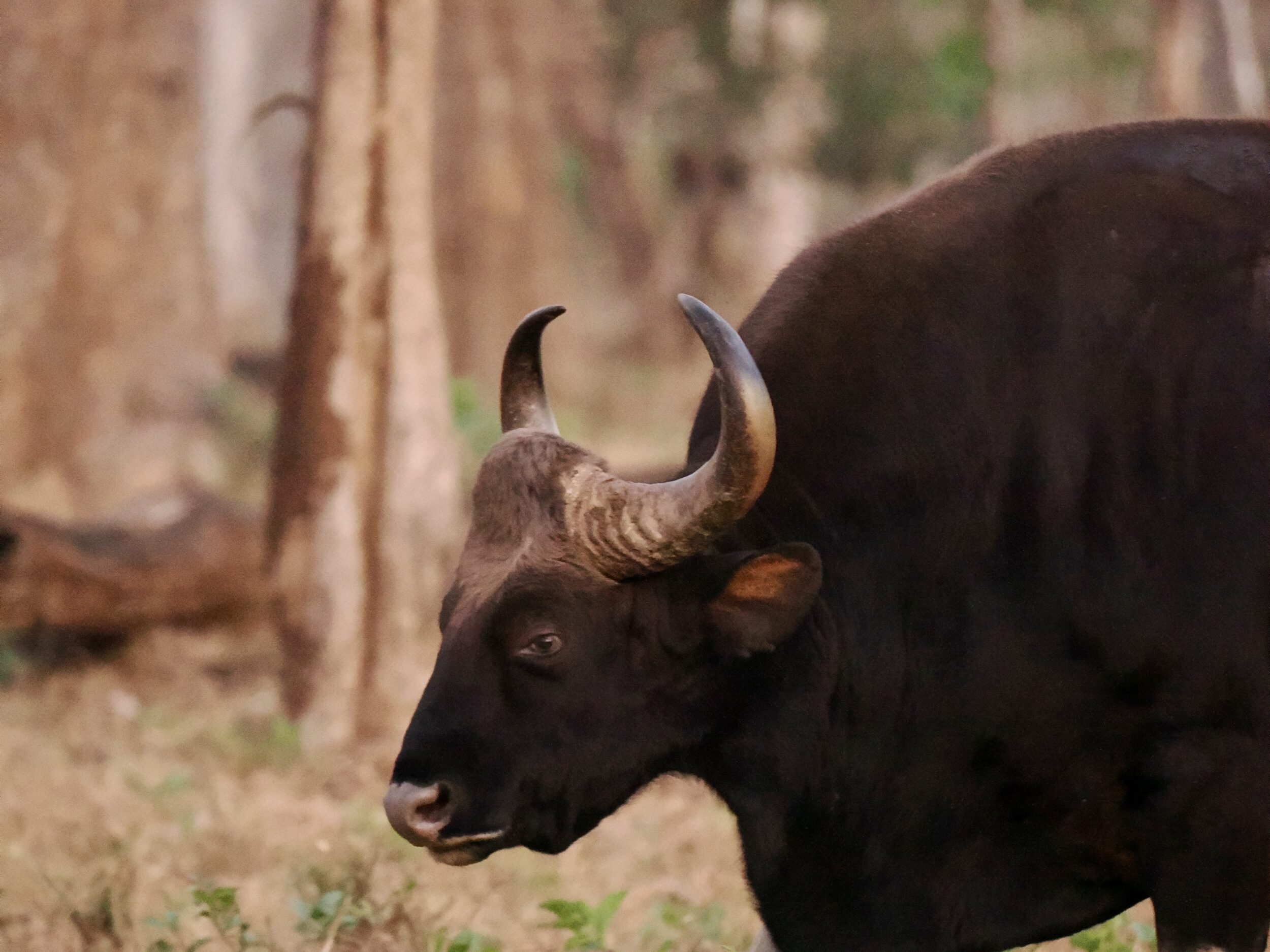Bos gaurus – gaur, sometimes (wrongly) called Indian “bison” – used to roam forests across south and southeast Asia.
Their number and range are much-diminished, and their conservation status is “Vulnerable”.
India is now gaurs’ stronghold; in suitable, “protected” Indian forests – most especially, in south India’s Western Ghats – the gaur population is increasing.
Older males are the world’s largest living cattle; 1 metric tonne is not exceptionally massive, and some of the oldest, darkest individuals weigh circa 1.5 tonnes!
Photo is copyright Doug Spencer, taken eleven minutes before sunrise (thus the image’s soft, digitally “noisy” quality) on 05 March 2023 in Nagarhole Tiger Reserve, Karnataka, south India.
My beloved and I have just returned from wildlife-accented travels in Kerala, Tamil Nadu and Karnataka; for the most part, we were in or near to the Western Ghats, which have a richly varied range of elevation, climate, soil and vegetation types.
Environmentally, a deal of the region is “hugely degraded”, but substantial “pockets” are substantially “intact”, with their native plants and animals well-managed, genuinely protected.
Most Australians know that Africa abounds in magnificent wildlife-watching opportunities, but do not realise that so does India; neither is “superior” or “inferior” to the other, and both ought be on your “radar”.
I have a mountain of selecting/deleting/editing to scale before Pelican Yoga can offer a series of more substantial south India posts.
Meanwile, a little series of single-image posts will attempt to give you some idea of how special – and how diverse – is this part of south India.
